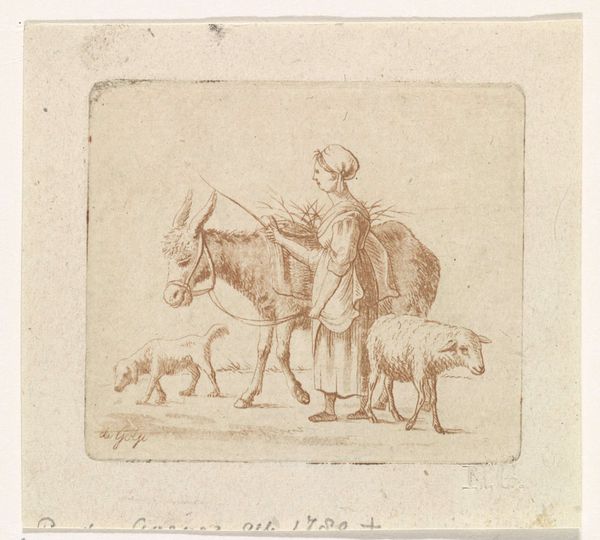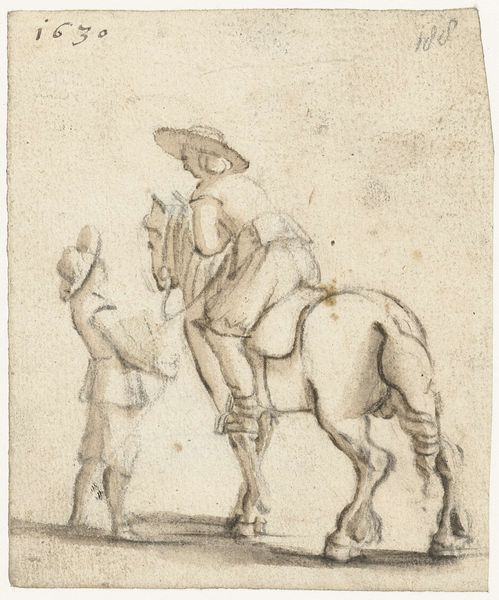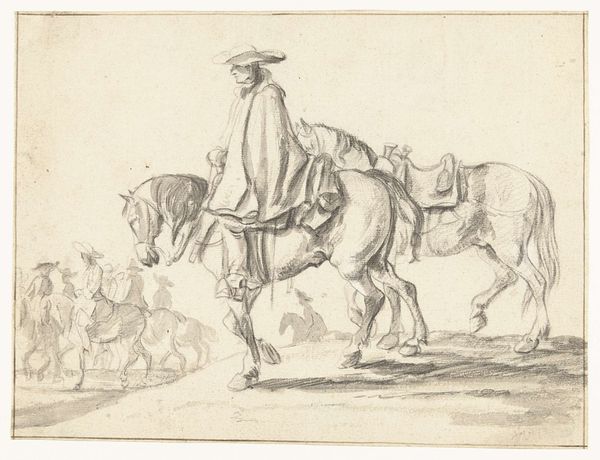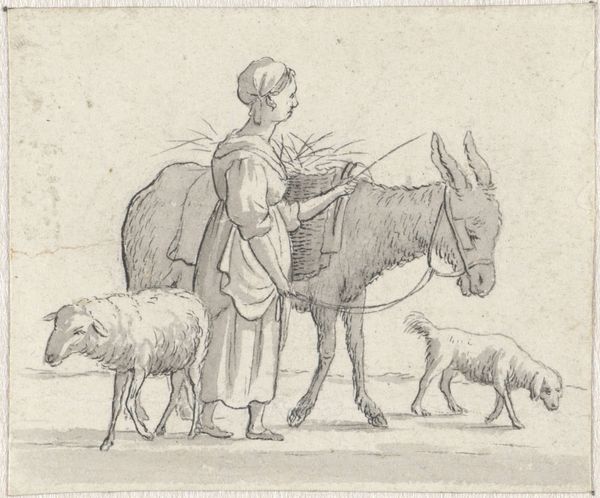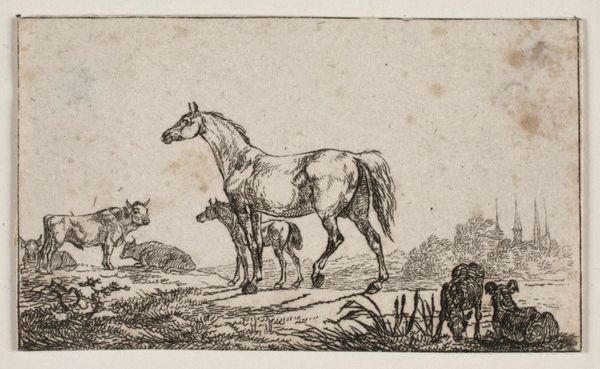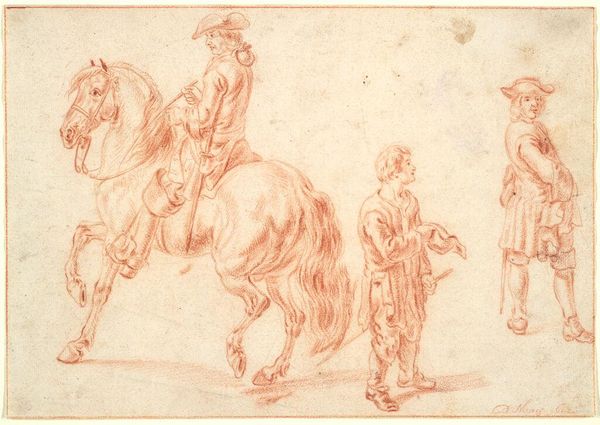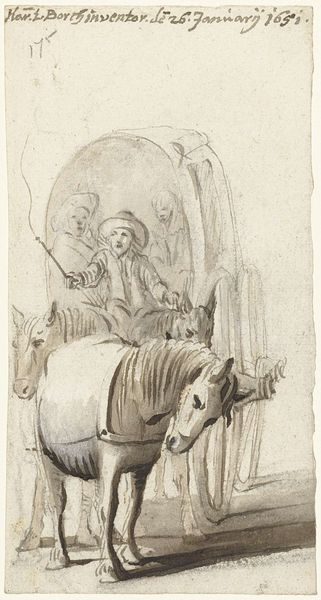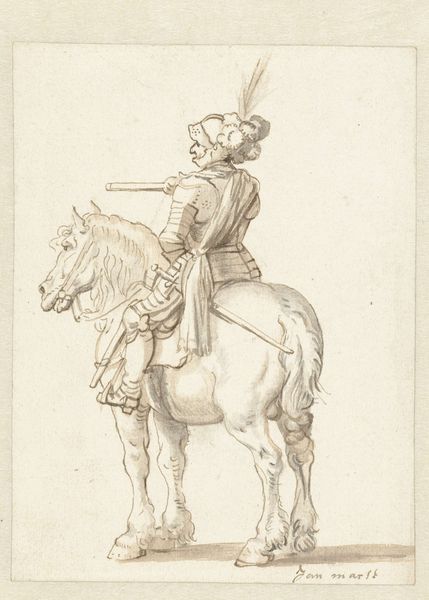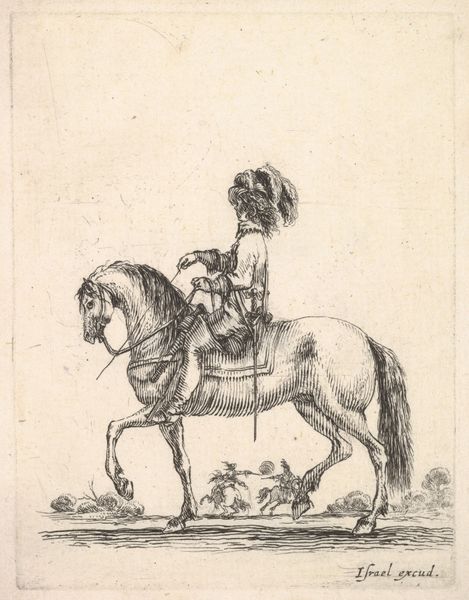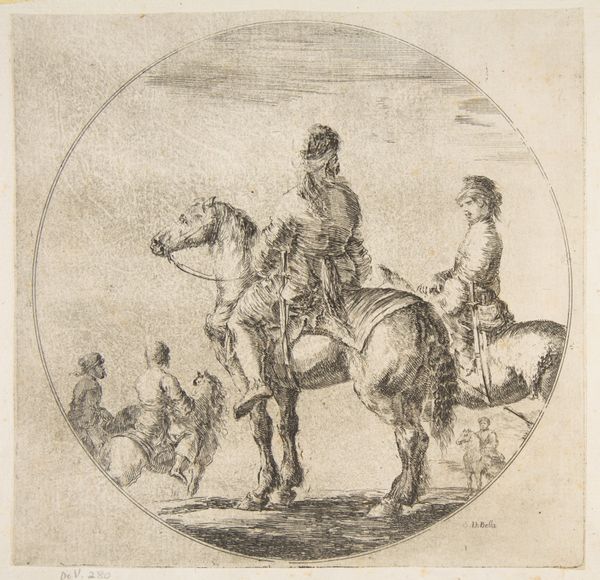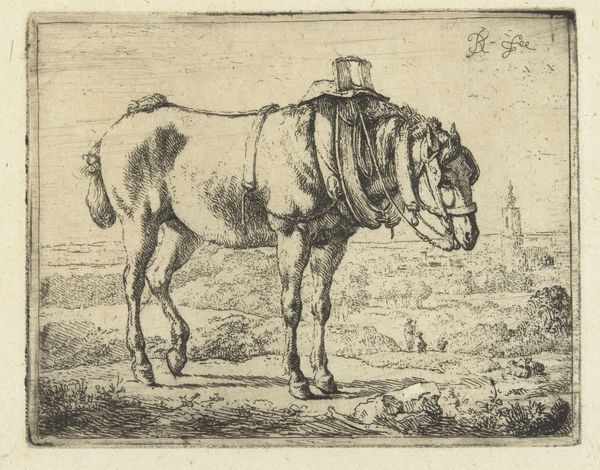
drawing, paper, ink
#
drawing
#
dog
#
landscape
#
figuration
#
paper
#
ink
#
romanticism
#
genre-painting
Dimensions: width 61 mm, height 53 mm
Copyright: Rijks Museum: Open Domain
Pieter de Goeje made this etching of a shepherdess with a donkey, sheep, and dog sometime in the first half of the 19th century in the Netherlands. The etching presents a somewhat romanticized view of rural life. During this period, the Netherlands was undergoing significant social and economic changes with increasing urbanization. Artists often looked to the countryside as a site of authenticity and traditional values. The image also reflects broader European trends in art, with a growing interest in pastoral subjects and the lives of ordinary people. It's important to consider the institutions that supported art production at this time, such as art academies and patronage systems. These institutions played a role in shaping artistic styles and subject matter. By studying the social and institutional context in which this etching was made, we can gain a deeper understanding of its meaning and significance. Historical resources such as exhibition catalogs, artist biographies, and social histories of the Netherlands can help shed light on these contexts.
Comments
No comments
Be the first to comment and join the conversation on the ultimate creative platform.
